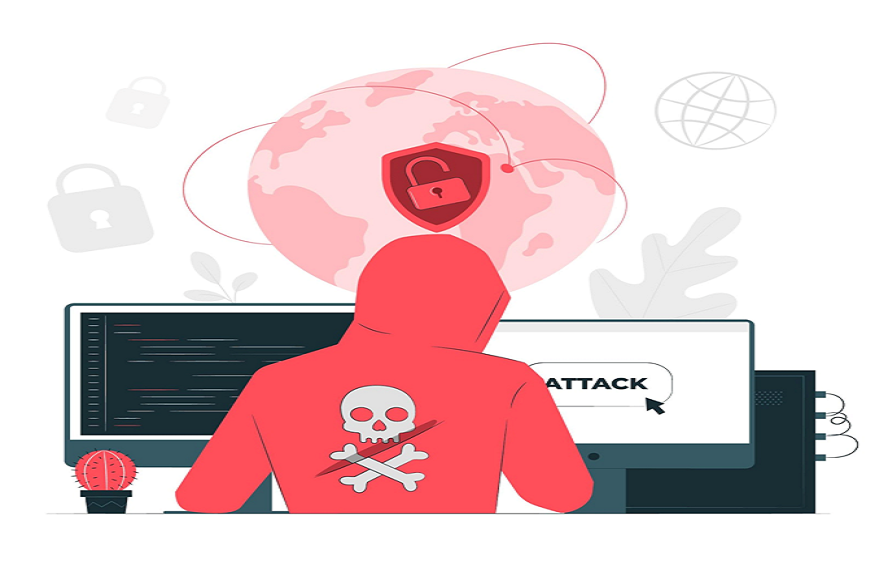How to Secure Your Office Broadband Connection Against DDoS Attacks?
What would happen if your office internet suddenly went down during peak hours? No emails, no access to cloud tools, no client meetings—just silence and frustration. This is exactly what a DDoS (Distributed Denial of Service) attack can do. These cyberattacks flood your network with fake traffic, causing real problems for your team and business operations.
Whether you run a startup or a growing enterprise, protecting your office broadband is now a necessity.
What is a DDoS Attack?
A Distributed Denial of Service (DDoS) attack is when multiple systems flood your network or server with traffic to overwhelm it and shut it down. It is like hundreds of people trying to walk through a single doorway at once—nobody gets through.
Types of DDoS Attacks
Knowing the various types of DDoS attacks helps you prepare better defences:
- Volume-Based Attacks: Overload the bandwidth.
- Protocol Attacks: Exploit server resources (e.g., firewalls).
- Application Layer Attacks: Target specific applications (e.g., website forms).
Why Are Businesses Targeted?
Cybercriminals often target businesses for strategic or malicious reasons. Some common motives include:
1. Financial Extortion
- Attackers may demand ransom payments (DDoS-for-hire or RDoS) to stop or prevent attacks.
- Especially common in e-commerce and fintech sectors where downtime equals direct revenue loss.
2. Reputational Damage
- A disrupted online presence can lead customers to question the reliability and security of a brand.
- Competitors or hacktivist groups might launch attacks to erode trust in the business.
3. Operational Disruption
- Timed attacks during product launches, festive sales, or high-traffic events can cripple a business’s operations.
Warning Signs of a DDoS Attack
Knowing what to look for helps you react faster. Here are some early indicators:
- Slow website or internal tools
- Unusual traffic spikes
- Inability to access services
- Crashing of business applications
- Alert emails from ISPs or firewalls
Why Securing Office Broadband Matters
An unsecured connection can impact:
| Impact Area | Consequences |
| Business Continuity | Interruptions in daily operations |
| Financial Stability | Loss of revenue from downtime |
| Customer Trust | Dissatisfaction due to unavailability |
| Legal Compliance | Violation of data security laws |
Your office broadband internet is more than just speed—it’s a business enabler. Choosing a secure and reliable connection like the one offered by Airtel, which includes high-speed access, static IP, and built-in DNS and device security, can reduce these risks significantly.
How to Secure Your Office Broadband From DDoS Attacks?
Let’s explore a practical and layered approach:
1. Use a Firewall with DDoS Protection
Firewalls can act as your first line of defence.
Checklist for Firewalls:
- Configurable for inbound and outbound rules
- Stateful inspection
- DDoS mitigation features
2. Choose an ISP That Offers Security Features
Not all broadband services are built equal. Ask your ISP:
- Does it offer static IPs?
- Are there anti-DDoS tools integrated?
- Is DNS-level protection included?
3. Implement Rate Limiting
This controls the number of requests a server will accept over time.
- Reduces load on the server
- Helps slow down potential attacks
4. Activate IP Whitelisting
Only allow trusted IPs to access your internal systems or admin portals.
Common Use-Cases:
- Remote working
- Access to cloud dashboards
- Admin panel logins
5. Monitor Traffic Regularly
Use traffic analytics tools to:
- Identify suspicious spikes
- Detect irregular access patterns
- Set alert thresholds
Best Practices for Ongoing DDoS Defence
Follow these steps to build long-term protection:
A. Train Your Team
- Conduct regular cyber drills
- Teach employees to report suspicious emails or behaviour
- Implement basic hygiene: strong passwords, multi-factor authentication
B. Use a Content Delivery Network (CDN)
A CDN distributes traffic across multiple servers, making it harder to overwhelm your network.
Benefits:
- Faster content loading
- Reduced load on the main server
- Built-in DDoS filtering
C. Opt for Cloud-Based DDoS Protection
Choose cloud-based DDoS protection for automatic scalability and faster response. These solutions absorb traffic surges, filter malicious requests, and make sure your services stay online during an attack.
D. Regular Software Updates
Outdated systems can be easily exploited. Keep:
- Firewalls
- Routers
- Antivirus tools up to date
Real-World Examples: Impact of DDoS Attacks on Businesses
| Company Type | Attack Result |
| E-commerce Store | Lost ₹3 lakhs in 2 hours of downtime |
| SaaS Company | Service unavailable, customers churned |
| Logistics Startup | Backend tools stopped, delayed deliveries |
Even a few minutes of disruption can affect customer trust and revenue flow.
Use Redundant Connections
If possible, keep a secondary broadband connection ready from a different provider. In case of a major attack, you can failover without halting operations.
How to Implement:
- Use SD-WAN tools to switch between lines automatically
- Ensure the backup connection also has basic security protocols
Consider a Managed DDoS Solution
For businesses that operate critical services or handle sensitive data, managed DDoS solutions provide expert handling and real-time response.
One such offering is Airtel’s DDoS protection services, which safeguard your business with global threat intelligence and continuous monitoring. It’s a valuable option for organisations that cannot afford downtime or reputation damage.
Develop an Incident Response Plan
A solid plan can minimise damage during an attack.
What to Include:
- Roles and responsibilities
- Emergency contacts
- Communication plan for clients
- Steps to isolate affected systems
Why Prevention is Cheaper Than Downtime
| Cost Element | Without Security | With Security |
| Downtime loss (per hour) | ₹50,000+ | ₹0 – ₹5,000 |
| Recovery costs | ₹20,000 – ₹1 lakh | Minimal |
| Brand damage | High | None to low |
Security is an investment that pays for itself many times over.
Final Thoughts
A DDoS attack may seem like something only big enterprises worry about. But today, even small offices and mid-size businesses are targets. With smart planning and the right broadband and security tools in place, you can stay protected and confident.
Take proactive steps now—because prevention is not just better than cure, it’s also much cheaper.


